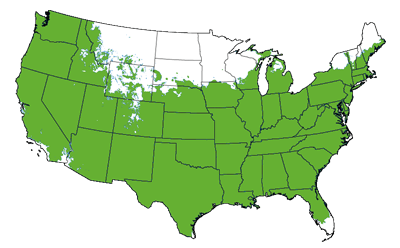Orangeola Japanese Maple
Orangeola Japanese Maple
Weeping Japanese Maple that offers Unique Color!
- You will treasure 3 seasons of Orange, Green, and Red!
- Create a peaceful outdoor space for your family
- Perfect compact size for even the smallest spaces
- Considered to be an Outstanding Cascading Laceleaf by Experts


Product Details
 Growing Zones 5-9
Growing Zones 5-9
| Soil Type | Acidic, Adaptable, Well Drained |
| Sunlight | Full, Partial |
| Drought Tolerance | Semi |
| Mature Height | 6-10 Feet |
| Mature Width | 6-10 Feet |
| Fall Color | Red |
| Shipping Restriction | AZ |
The Orangeola Japanese Maple is tough and beautiful. The weeping shape, cascading branches, and lacy, petite leaves of this variety are a sight to behold. True to its name new foliage emerges in spring orange-red. There is still a hint of orange on the green-red summer leaves.
Often a second flush of new leaves arrives in midsummer and offers more of that unique and exciting orange this tree is known for. Fall brings with it more color and beauty as the leaves transform into a deep red and then a fiery orange-red before falling in winter. The leaves of this variety hang around longer than most so you get to enjoy the show for quite some time!
This outstanding variety is a perfect accent or focal tree for water, rock, or meditation gardens as well as decks, patios, and anywhere you need a pop of great color and style! Plan for a mature height and spread of about 6 to 8 feet. This variety is great for containers and will stay smaller when grown in pots.
Key Features
- Amazing orange color! This tree transforms your landscape with always exciting and changing colors.
- The Orangeola tolerates heat better than other Japanese Maples and can even grow into a zone 9.
- This a popular and respected dissectum variety. It is loved by novices and experts alike.
- Perfect small tree for creating an amazing getaway in your own yard! Add beauty, style, color, and tranquility with the Orangeola Japanese Maple!
Pro Tip: Remember this tree loves water so don't neglect its needs just because it can take the heat especially if you plan to grow your Orangeola in a planter. Japanese maples do have some drought tolerance once established, but regular watering will give you a faster-growing, healthier tree and can even prevent or minimize leaf scorch.
The Orangeola Japanese Maple is a tree you will treasure for years to come. Order yours today before they are gone!
Why Is My Orangeola Turning Green?
Enviromental reasons like too much sunlight or not enough sunlight are reasons for your maple to be discolored or look greener than normal. Additional chlorophyl is produced by this tree in order to make up for the missing sunlight thus giving it a green tone.
How Fast Does This Japanese Maple Grow?
This tree is known to be a slow grower and should be expected to grow 1-2 feet per year until it reaches a mature height of 6-8 feet.
Where Should I Plant This Tree?
This adaptable tree thrives in a spot that has well drained, acidic soil and full sun to part shade conditions in grow zones 5-8.
When planting your Orangeola Japanese Maple be sure you have the right location and conditions for your new tree to thrive. Spring and fall are ideal times to plant. However, if you avoid extreme temperatures you can plant your Maple almost any time of the year.
Planting
Lace Leaf Japanese Maples tolerate full sun to part shade. Choose part sun/shade unless you are in a cooler growing zone, like a 5, 6, or 7. In sunny spots you may see some leaf scorch when these trees are young, especially if they are not getting adequate water.
Japanese Maples prefer soil that is well-drained, but moist, neutral to slightly acidic, and nutrient rich. However, Japanese Maples will adapt to a variety of soils. Mulching will keep the roots moist and protect them from extreme temperatures in winter. Add a layer of 2 inches of mulch. Do not allow the mulch to touch the trunk as this increases the chances of pests and disease.
Watering
Keep your tree watered if you do notice leaf scorch, but don't panic. Leaf Scorch is not going to affect the overall health of your tree. Japanese Maples should be watered often enough to keep the soil moist. Do not allow the soil to dry completely or be overly saturated. Either condition can harm a Japanese Maple.
Fertilizing
Fertilize in early spring and when planting to give your tree a boost. Choose a slow release fertilizer.
Maintenance
Lace Leaf Maples don't generally require pruning, but, if needed, prune when they are dormant to remove any dead, dying, or crowded branches, or to maintain shape.
The best way to prevent disease and pests is by providing the appropriate care for your plants. Proper location choice, watering, and fertilization are the keys to your success. Japanese maples don't tend to have problems with pests and disease unless they are unhealthy, weakened trees.
The Orangeola Japanese Maple is a perfect accent or focal tree for water, rock or meditation gardens. Plant in a mixed bed with Junipers for out of this world texture. Add a few rocks and your neighbors will think you hired a professional!
For additional options, be sure to browse our Japanese Maple, Dwarf tree and Maple tree collections.












